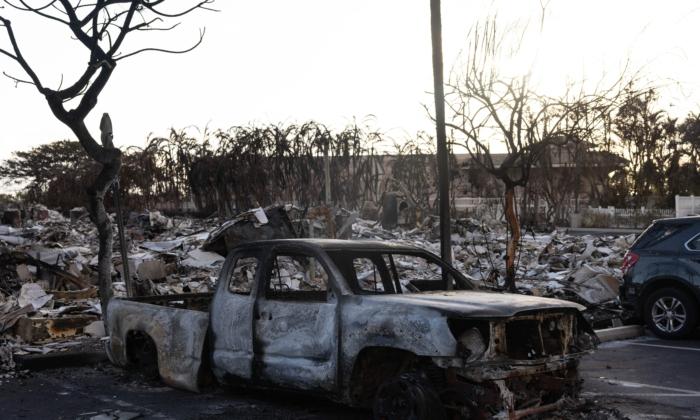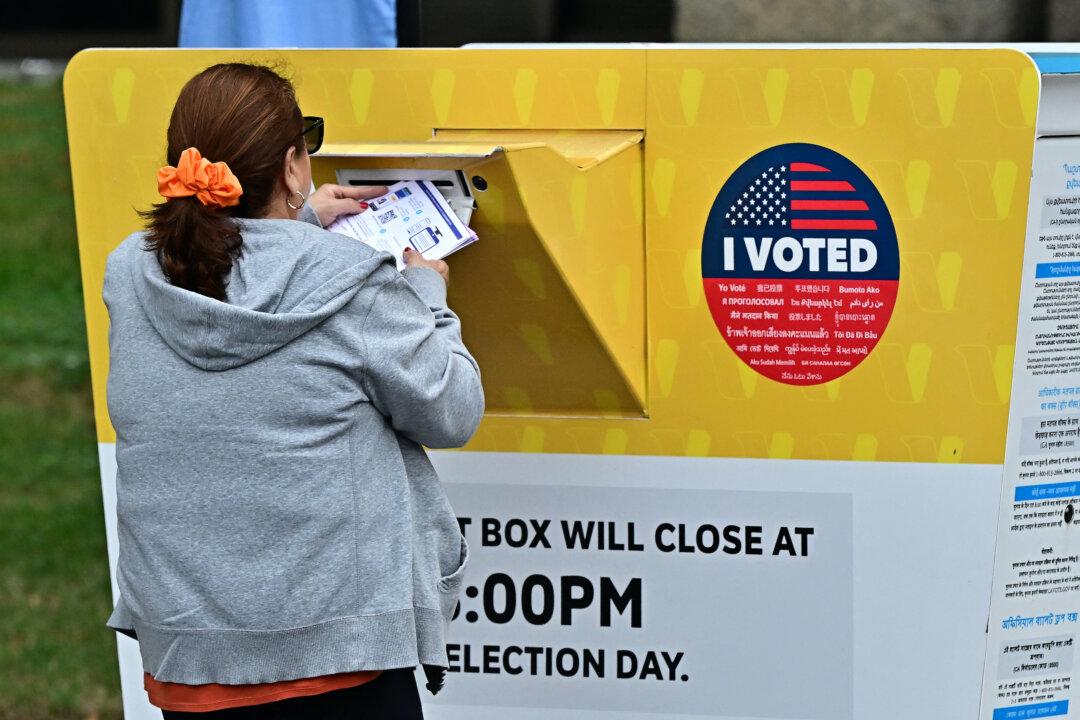President Joe Biden and First Lady Jill Biden will visit the Hawaiian island of Maui on Aug. 21 to survey the devastation done by the deadliest wildfires in the country in more than a century.
The fires, which destroyed the historic resort town of Lahaina, have claimed the lives of at least 106 individuals.
Announcing the trip on Aug. 16, White House press secretary Karine Jean-Pierre said the president’s agenda would include meetings with survivors, first responders, and federal, state, and local officials.
“The president continues to marshal a whole-of-government response to the deadly Maui fires, and he has committed to delivering everything that the people of Hawaii need from the federal government as they recover from this disaster.”
The announcement comes days after President Biden’s return from his weekend at the beach in Delaware—a vacation conservatives were quick to criticize, given the ongoing crisis in Hawaii.
“My wife, Jill, and I are going to travel to Hawaii as soon as we can—that’s what I’ve been talking to the governor about,” he said. “I don’t want to get in the way; I’ve been to too many disaster areas. But I want to go, make sure we’ve got everything they need. Want to be sure we don’t disrupt the ongoing recovery efforts.”
According to Ms. Jean-Pierre, the trip was ultimately scheduled for early next week on the advice of Hawaii Gov. Josh Green.

Federal Response
At an Aug. 16 press briefing, Federal Emergency Management Agency (FEMA) Administrator Deanne Criswell said that the situation in Maui is still “very active and dynamic” as rescue teams continue to search for the hundreds of people still reported missing.Search and recovery efforts are being led by hundreds of FEMA personnel and aided by 40 canine search teams, Ms. Criswell said.
Mortuary specialists from the Department of Health and Human Services are also on the ground and will soon be joined by additional specialists from the Department of Defense to identify the deceased.
As for the investigation into what started the blaze, she said state officials would conduct that assessment.
“This is more than just the visual impact of what we’re seeing on television—more than the visual impact of the burned landscape,” Ms. Criswell said, describing what she’d witnessed on the ground.
“It’s the level of devastation from this fire and the feeling of loss from such a culturally rich community that was really palpable everywhere I went.”
In addition to shelter and thousands of meals and supplies, the administrator said FEMA has provided more than $2.3 million in financial assistance to more than 1,000 registrants.
She added that those in need could register online at DisasterAssistance.gov, by calling 1-800-621-3362, or at the agency’s new disaster recovery center on the ground.
“I want the people of Hawaii to hear it from me: FEMA and the federal family are here to be with you, and we will be with you every step of the way,” she said.
Additionally, despite the myriad forms of assistance the administrator said are available to displaced families, one reporter said she and her colleagues had interviewed “survivor after survivor” who said they didn’t see any government personnel until days after the fires broke out, and some still haven’t.
“I think you need to understand that this community is going through an amazingly traumatic event,” Ms. Criswell responded, noting that FEMA and other federal personnel began responding “as soon as the fire started.”
Adding that some residents were likely staying with friends and relatives in other parts of the island, she stressed that her team would continue to conduct outreach in the communities “to make sure everybody that needs assistance can get assistance.”
The administrator will join President Biden and the first lady on their trip to Maui next week, which she said she believes will lift the spirits of those affected by the fires.
“I know when the president travels, he’s going to be able to bring hope and he’s going to speak with the governor and the state’s first lady and talk to survivors and hear their stories,“ she said. ”It’s that level of hope that I think is going to really be a positive impact for this community.”







